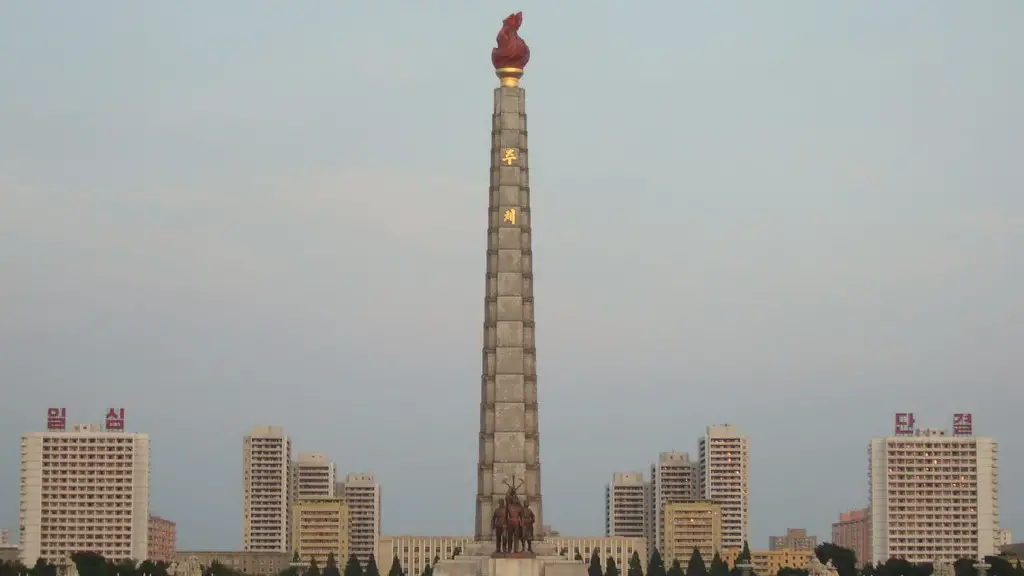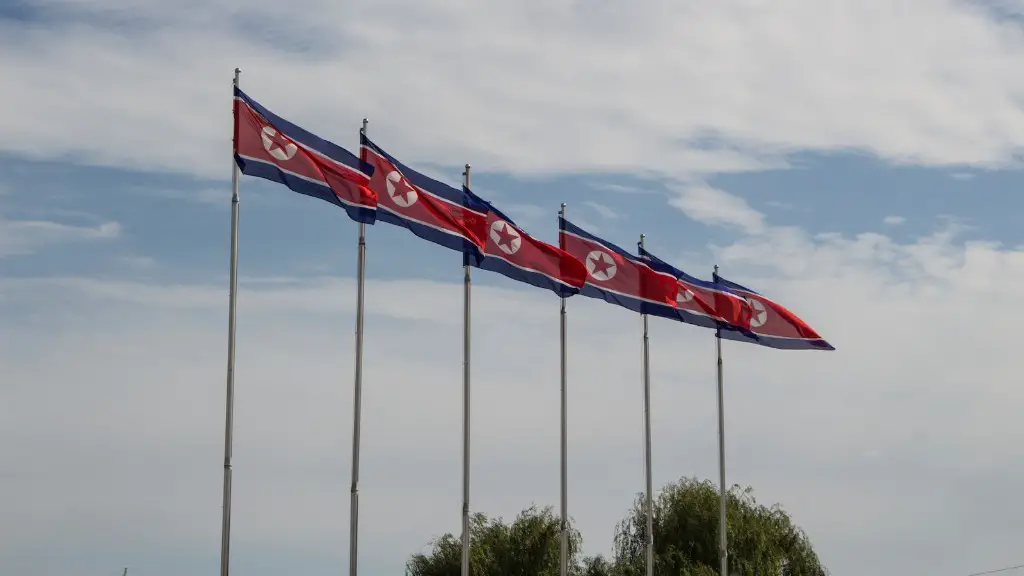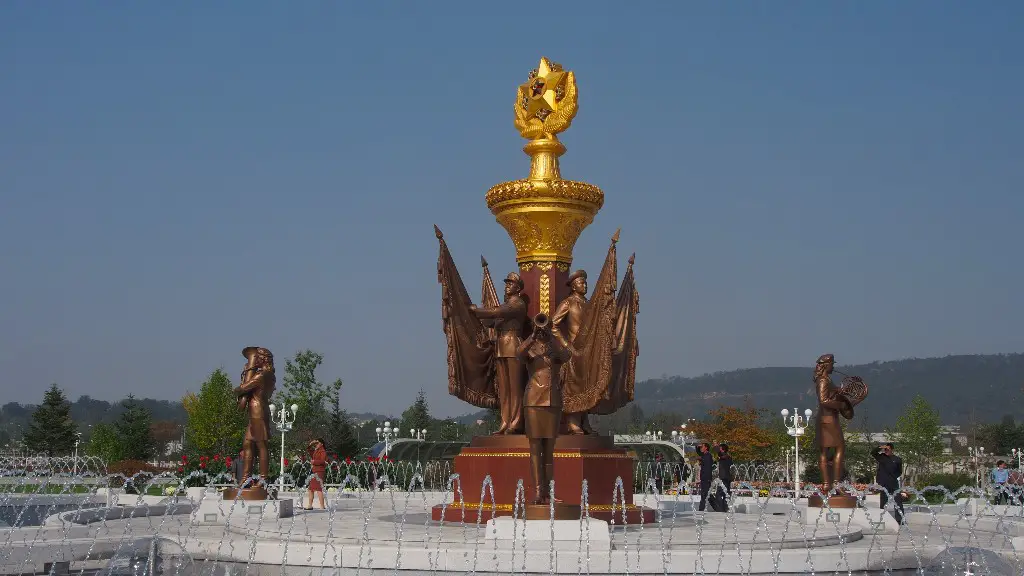North Korea is one of the most isolated countries in the world. It is also one of the most mysterious and secretive places on the planet. But one thing that has been a point of intrigue for many, is the lack of Google Street View in North Korea. Why has this country been excluded from Google’s street-level mapping service?
Google Street View is a service provided by Google Maps and Google Earth, and it allows users to view detailed street-level imagery of the world’s major cities. From the ability to explore and virtually travel to Landmarks to take in the scenery from a street-level viewpoint and get a sense of what life is like in other countries, Google Street View has become an indispensable resource for travelers and armchair adventurers alike. But for some reason, North Korea has been left off of this list, and the reasons go beyond mere technological limitations.
One of the most obvious reasons for the lack of Street View in the Hermit Kingdom is that the country is highly restrictive on all forms of travel. In order to take the 360-degree photos for Street View, Google typically sends out specially-equipped vehicles with high-resolution cameras to capture the images. This obviously would not be allowed in North Korea, as tourists are rarely permitted to enter the country, and foreigners who are granted access are highly restricted as to where they can go and what they can do. In addition to that, the government maintains tight control over all media and communications, so Google’s Street View vehicles would likely not be granted the necessary permits to operate in the country.
Another reason is that North Korea’s economy is still highly centralized, and the country’s infrastructure is rather rudimentary. This means that many of the major cities and towns that would typically be featured in Google Street View are still not connected to the internet, or do not have reliable access to electricity or mobile data. This makes it difficult for Google to send out its Street View cars and obtain the necessary images.
The lack of Street View in North Korea is also reflective of its generally hostile attitude towards Western media and technology. The government maintains a tight grip on the media and has enacted harsh restrictions on internet access for its citizens. The state’s media outlets are used to propagate its propaganda, and western technology such as Google’s Street View would be seen as a threat to this system. There is also the fear that citizens would use the service to access information that is not sanctioned by the government.
Foreign Aid
One of the main sources of foreign aid to North Korea is from China. China has been providing various forms of aid to North Korea since the 1950s, and it continues to be a major source of economic, political, and military aid to the Hermit Kingdom. China has also made significant investments in North Korea’s infrastructure, and has provided assistance in the form of capital and technology. However, there are concerns that much of the aid is being used to fund the country’s nuclear weapons program, as well as its military infrastructure. Additionally, while China has provided substantial aid to North Korea, it has also done little to push the regime to open up to outside influences.
While China has become North Korea’s main source of foreign aid, other countries, such as the United States, have also provided assistance. For example, in 2018, the US pledged to provide North Korea with $1.3 billion in humanitarian aid over a five-year period. The aid is intended to help the country improve its infrastructure and support economic development, but it is unclear exactly how much of the money has been used for these purposes. Additionally, many of the restrictions on access to technology and media remain in place.
Cultural Exchange
Despite the lack of economic or technological aid from Western countries, there have been a few initiatives that have sought to promote cultural exchange between North and South Korea. In 2018, a joint performance between North and South Korea was held in Pyongyang as part of a program to build cultural ties between the two countries. Additionally, the two countries have held several volleyball matches in North Korea, and in 2019, an inter-Korean summit was held, in which the two leaders discussed peace and the potential for economic cooperation. However, there has been limited progress in the peace process and it remains to be seen what kind of impact these initiatives will have in the long-term.
While North Korea remains one of the most isolated countries in the world, there have been signs that the government is seeking to open up to the outside world. For example, Kim Jong-un has made several visits to China and South Korea in recent years, and the country has taken steps to liberalize its economy and attract foreign investment. Additionally, recent reports have indicated that the government may be considering allowing foreign companies, such as Google, to invest in the country. If this does come to fruition, it is possible that Google may eventually be allowed to send its Street View cars into the country, allowing residents and visitors alike to take in the country from a whole new perspective.
Technology
One of the most significant obstacles to Google Street View entering North Korea is the lack of technology infrastructure. Internet access is heavily restricted in North Korea, and the average speed of broadband connections is well below the global average. In addition, North Korea’s mobile operators are extremely limited in the services they can provide, and many are banned from accessing international networks. As such, Google would likely face significant technicalchallenges in attempting to roll out Street View in the country.
Furthermore, North Korea’s government maintains strict controls over the media and access to information. All publications, including newspapers, magazines, and books, must be approved by the government before they can be published. Additionally, North Koreans are not allowed to access foreign websites, and the country heavily censors the internet for its citizens. As such, it is highly unlikely that the government would allow Google to launch Street View in the country without significant restrictions.
Additionally, the government enforces strict restrictions on photographing in public. Tourists are not allowed to take photographs of soldiers, military installations, or officials, and most public gatherings are prohibited. As such, it is unlikely that Google would be allowed to capture images for its Street View service without facing significant restrictions.
Political Will
Ultimately, the lack of Street View in North Korea is reflective of the country’s overall state of isolation and restrictions on foreign media and access to the internet. Google has expressed an interest in providing the service in North Korea, however the company has not been able to make any progress due to the country’s strict regulations. Until there is a political will to actually allow foreign companies to operate in North Korea and provide foreign media, it is unlikely that Google will be able to launch Street View in the Hermit Kingdom.
The lack of Street View in North Korea is also indicative of the country’s hostile attitude towards the outside world and its reluctance to embrace western technology and media. Google Street View is a technology that requires extensive infrastructure and access to international networks, and it is difficult to see how it would be possible for the service to operate in North Korea without the full cooperation of the government. Despite this, there have been some promising recent developments, with North Korea taking tentative steps towards opening up to the outside world. If North Korea is indeed embarking on a path of reform and openness, then it is conceivable that Google Street View could be made available in the country in the near future.



